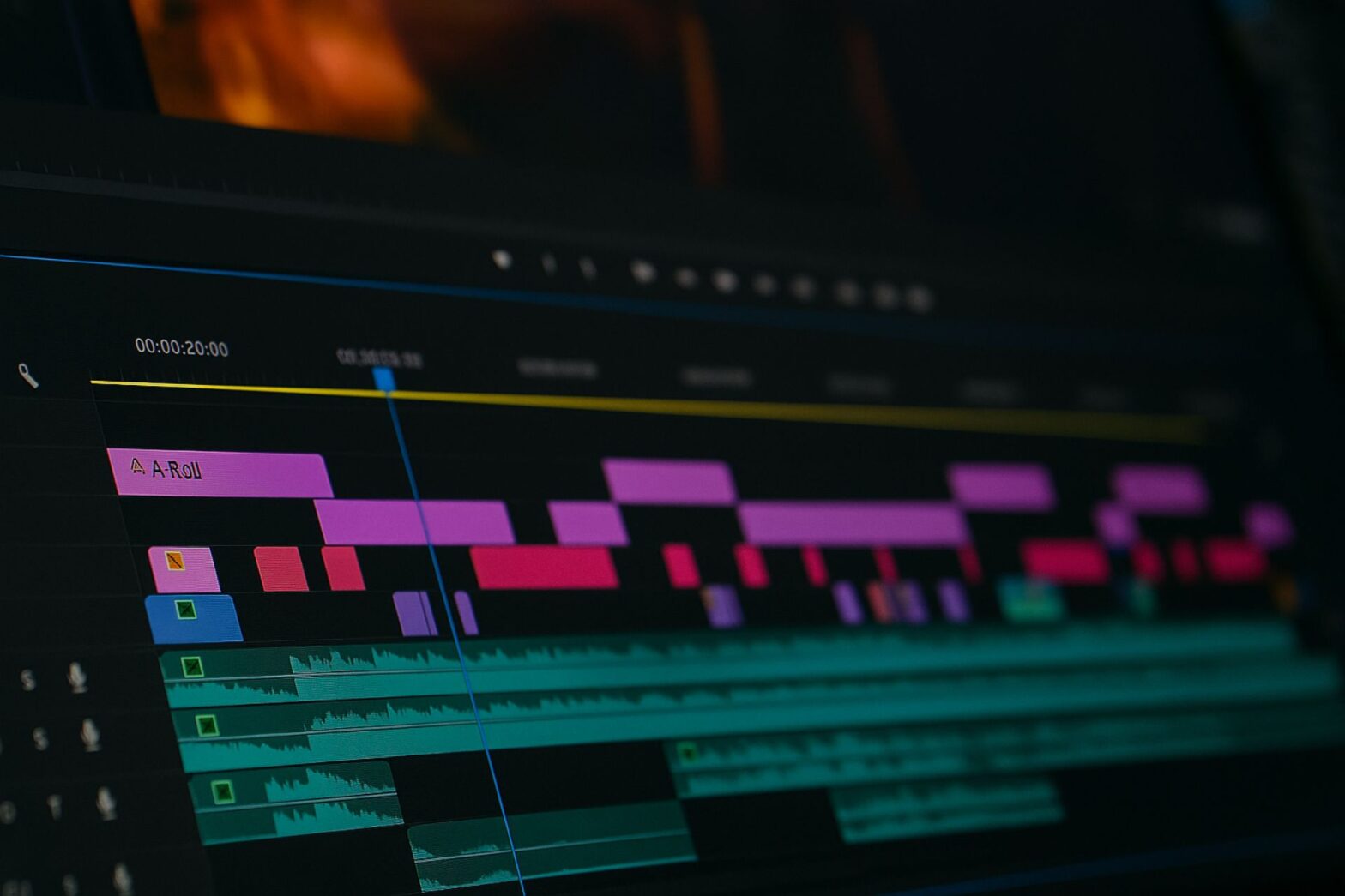Table of Contents
Every great story lives between the cuts.
You’ve seen it, the subtle shift from a speaker’s close-up to a hand tracing sunlight through a window. The slow-motion of coffee steam rising before the next line of dialogue. That’s B-Roll, the visual poetry that makes storytelling cinematic.
In a scroll-driven world where every second counts, audiences don’t just watch content, they feel it. And what they feel often comes from what isn’t said but shown. That’s the magic of B-Roll.
Let’s explore what B-Roll truly means in video production, why it’s the backbone of great storytelling, the different kinds of B-Roll shots, and how to use them effectively. Whether you’re crafting YouTube videos, brand films, or cinematic reels, this is your blueprint to creating visuals that linger long after the credits roll.
What Is B-Roll?
If your main footage is the narration of your story, B-Roll is its emotion.
B-Roll refers to supplementary footage that supports or enhances your main narrative (the A-Roll). It’s what transforms information into experience, providing texture, rhythm, and emotion to your video.
The term originated from the early days of film editing. Editors worked with two film reels “A-Reel” for the main content and “B-Reel” for additional shots used to cover cuts or enrich the story. Even in the digital era, the name and the principle remain unchanged.

A-Roll vs B-Roll
| Aspect | A-Roll | B-Roll |
|---|---|---|
| Purpose | Primary narrative, dialogue, or main action | Visual support, context, emotion |
| Example | A chef explaining a recipe | Close-ups of chopping vegetables, sizzling pans, garnish on the plate |
| Function | Drives the story forward | Adds atmosphere, continuity, and visual appeal |
In short, A-Roll tells the story. B-Roll makes the story worth telling.
Importance of B-Roll
1. It Makes Your Story Human
Words inform, but visuals move.
B-Roll helps your audience feel the emotion behind the message. A founder speaking about hard work? Cut to late-night edits and coffee cups. A vlogger talking about travel freedom? Cut to open roads and sunrise silhouettes. It’s these moments that turn your story into something human, relatable, and memorable.
2. It Adds Context and Depth
B-Roll gives your audience the full picture. It places your subject within their environment and connects ideas visually. A documentary on sustainability feels richer when intercut with shots of green fields, recycling centers, and factory smoke visuals that ground the narrative in reality.
3. It Keeps Audiences Engaged
Attention fatigue is real.
Static talking-head videos risk losing viewers fast. Well-timed B-Roll breaks the monotony, adds pace, and keeps the viewer visually stimulated, leading to longer watch times and stronger retention.
4. It Smoothens Transitions
Editors love B-Roll for one big reason: it hides the seams. It helps mask jump cuts, bridge two interviews, or create seamless scene transitions. The result? A smoother, more professional video that feels effortless to watch.
Types of B-Roll
Different types of B-Roll serve different narrative purposes. Here’s your filmmaker’s toolkit:
1. Establishing Shots
Wide or aerial views that set the scene, city skylines, sunsets, office exteriors.
Use when: Introducing a new location or time of day.
Example: Opening a travel vlog with a drone shot of Jaipur’s Amer Fort before diving into street scenes.
2. Cutaway Shots
Moments that “cut away” from the main subject to show something relevant, a product, document, or detail.
Use when: Adding context or illustrating a point.
Example: In a podcast video, when the host mentions “growing audience metrics,” cut to a graph or phone screen showing analytics.
3. Reaction Shots
These reveal emotion, laughter, surprise, awe.
Use when: You want to humanize your story.
Example: In an event video, show the crowd’s expressions as the keynote lands a punchline.
4. Insert Shots
Extreme close-ups of details, hands typing, raindrops, fabric texture.
Use when: You want to emphasize craft, precision, or symbolism.
5. Atmospheric / Filler B-Roll
Visuals that convey tone or ambiance, slow clouds, city lights, moving traffic.
Use when: Creating mood, pacing, or emotional space between story beats.
6. Behind-the-Scenes (BTS) Footage
Unscripted moments from the set, creators setting up, team laughter, candid interactions.
Use when: You want authenticity or to show the process behind the product.
How to Use B-Roll Effectively
1. Plan It Before You Shoot
The best B-Roll is never accidental.
Include it in your storyboard. For every talking point in your script, list potential supporting visuals. If your A-Roll says “our office culture is dynamic,” your B-Roll might include brainstorming sessions, coffee breaks, and laughter on the floor.
2. Shoot More Than You Need
Always overshoot. Capture variations, wide, medium, and close to give your editor flexibility. You can always trim later, but you can’t invent what you didn’t shoot.
3. Match Emotion and Pacing
Your B-Roll should mirror your story’s rhythm. Fast cuts for energetic scenes, slow-motion for emotional beats. Music plays a big role here the tempo of your soundtrack can guide your edit’s mood.
4. Maintain Visual Continuity
Keep lighting, color tone, and composition consistent. B-Roll should blend with A-Roll seamlessly not stand out awkwardly.
5. Use Music and Sound to Elevate It
The right soundtrack transforms ordinary B-Roll into emotion-rich cinema. Pair visuals with royalty-free music and SFX that complement your tone. Platforms like Hoopr.ai offer regionally diverse, cinematic tracks designed for creators and brands, perfect for taking your edit from good to unforgettable.
6. Edit with Intention
Don’t throw in B-Roll just to fill space. Every cut should add meaning, enhance, not distract. Think of it as punctuation in a sentence: deliberate, rhythmic, and essential for flow.
Common Mistakes to Avoid
Even great footage can fall flat with poor execution. Watch out for these common errors:
1. Random or Irrelevant Footage
Every B-Roll clip must connect logically or emotionally to your story. Irrelevant visuals confuse the viewer and break immersion.
2. Overuse
Balance is key. Too much B-Roll can dilute your narrative. Use it to emphasize, not overwhelm.
3. Poor Quality Shots
Shaky, unfocused, or poorly lit footage distracts from your message. Use tripods, stabilizers, or editing tools to maintain quality.
4. Ignoring Continuity
If your subject’s outfit or lighting changes abruptly between shots, the illusion breaks. Always maintain time and context consistency.
5. Forgetting Audio Sync
Ambient sounds — footsteps, traffic, chatter — should align naturally with visuals. Proper sync creates realism and keeps immersion intact.
Conclusion
B-Roll is the invisible heartbeat of visual storytelling. It’s not just extra footage, it’s what gives your content its soul.
It shapes emotion, controls pacing, and transforms simple dialogue into cinema. Whether you’re shooting a vlog, ad film, documentary, or brand story, B-Roll is the difference between watchable and unforgettable.
The next time you pick up a camera, don’t just film what’s happening film what it feels like.
Now it’s your turn.
Start experimenting with B-Roll in your next project, observe how it changes the rhythm, mood, and emotional pull of your edit.
Have you already used B-Roll in your videos? Share your favorite techniques or challenges in the comments below.
And if you’re looking for the perfect background music or SFX to make your B-Roll come alive, explore Hoopr.ai, India’s largest library of royalty-free music built for creators, filmmakers, and brands who believe every frame deserves its perfect sound.

